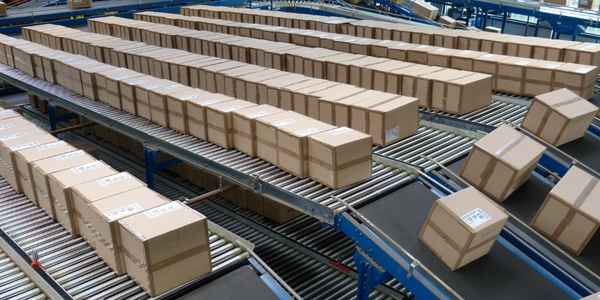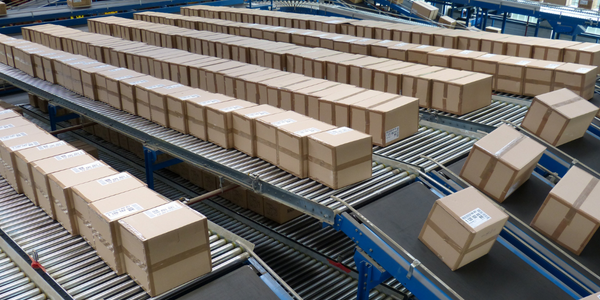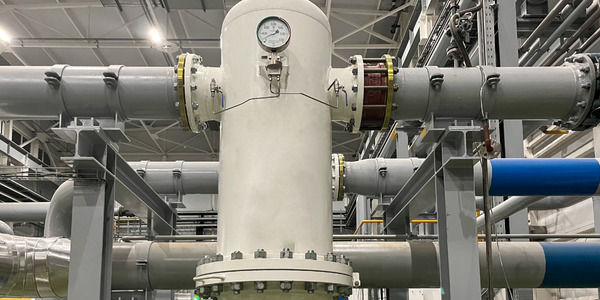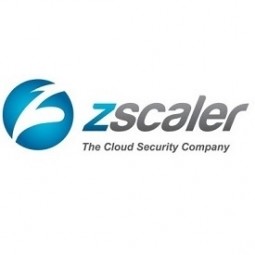Technology Category
- Cybersecurity & Privacy - Cloud Security
- Networks & Connectivity - Gateways
Applicable Industries
- National Security & Defense
- Packaging
Applicable Functions
- Quality Assurance
Use Cases
- Construction Management
- Tamper Detection
Services
- Cloud Planning, Design & Implementation Services
- System Integration
About The Customer
Mondi is an international packaging and paper group, employing more than 25,000 people in 100 locations across more than 30 countries. The company develops innovative industrial and consumer packaging solutions for leading brands around the world. With a focus on sustainability, Mondi has integrated the entire system lifecycle, from forest to factory, including everything from the generation of electricity and heat to the processing of raw wood into pulp and paper products. Mondi has been at the forefront of environmentally compatible manufacturing and is innovative with its network infrastructure and security.
The Challenge
Mondi, an international packaging and paper group, was facing challenges with its existing network infrastructure. The company was backhauling Internet traffic over MPLS to two centralized gateways, which was not only expensive but also impacted the user experience. As part of a decentralization strategy for all of its worldwide locations, Mondi sought a more scalable network infrastructure with increased security. The company also had a hardware-based proxy, software-based URL filter, and a large number of firewall clusters, all managed by a small IT team. It needed a solution that would considerably reduce the work required to provide secure Internet access for Mondi’s 10,000 PC workstations.
The Solution
Mondi adopted the highly integrated Internet security platform from Zscaler after an intensive test phase. This platform was able to replace many management-intensive products, helping to decentralize the network infrastructure and significantly reduce bandwidth. The purchase of a security-as-a-service solution resulted in clear cost benefits, considerably less work in its operation, and the desired scalability for all locations. Zscaler Cloud Sandbox, a service offered with the Zscaler Cloud Security Platform, is based on behavioral analysis, and effectively discovers and blocks modern malware such as viruses, botnets, and zero-day attacks in the cloud. The Zscaler platform also automates a variety of security functions that previously had to be managed manually, improving quality assurance and bringing all locations up to a common standard.
Operational Impact
Quantitative Benefit

Case Study missing?
Start adding your own!
Register with your work email and create a new case study profile for your business.
Related Case Studies.

Case Study
IoT Data Analytics Case Study - Packaging Films Manufacturer
The company manufactures packaging films on made to order or configure to order basis. Every order has a different set of requirements from the product characteristics perspective and hence requires machine’s settings to be adjusted accordingly. If the film quality does not meet the required standards, the degraded quality impacts customer delivery causes customer dissatisfaction and results in lower margins. The biggest challenge was to identify the real root cause and devise a remedy for that.

Case Study
Zenon the Ideal Basis for An Ergonomic HMI
KHS develops and produces machines and equipment for filling and packaging in the drinks industry. Because drinks manufacturing, filling and packaging consist of a number of highly complex processes, the user-friendly and intuitive operation of equipment is increasingly gaining in significance. In order to design these processes as simple as possible for the user, KHS decided to introduce a uniform, transparent and standardized solution to the company. The HMI interface should meet the requirement for people with different qualifications and enable them to work on a standard platform.

Case Study
Data Capture for Afghanistan Forces
Electronic equipments on the field of Afghanistan provided information on the status of the vehicle and to identify potential threats surrounding it to the British Force. The monitoring and interpretation of this data requires robust and sophisticated digitization for data capture and communication.

Case Study
Sparks Dynamics Assists Atlas Container Secure a $15,000 BGE Energy Rebate
The ReMASTER Compressed Air Monitoring system was installed in 2015. This system is capable of monitoring compressed air system parameters on a continuous basis and transferring that information to a cloud server which can be accessed by Atlas Container personnel, Industrial Diagnostics and Sparks Dynamics. This information was collected into a database which can be exported to an Excel spreadsheet or displayed graphically using Sparks Dynamics ViewMaster Software. The average annual compressed air electricity expense was estimated to be approximately $116,000. This is based on an incremental $/KWh electric rate of $.091 per KWh and an estimated compressed air energy consumption of 1,279,200 KWH. The implementation phase of Energy Conservation Measures (ECMs) for the Compressed Air System included: • Identification and repair of compressed air leaks • Understanding of compressed air usage per manufacturing machine and installation of shut off valves when the machines are no longer in production mode • Identification of misapplications of compressed air to include blow offs, venturis, and cooling scenarios • Understand system pressure requirements and potential installation of point of use pressure regulation.

Case Study
Mondi Implements Statistics-Based Health Monitoring and Predictive Maintenance
The extrusion and other machines at Mondi’s plant are large and complex, measuring up to 50 meters long and 15 meters high. Each machine is controlled by up to five programmable logic controllers (PLCs), which log temperature, pressure, velocity, and other performance parameters from the machine’s sensors. Each machine records 300–400 parameter values every minute, generating 7 gigabytes of data daily.Mondi faced several challenges in using this data for predictive maintenance. First, the plant personnel had limited experience with statistical analysis and machine learning. They needed to evaluate a variety of machine learning approaches to identify which produced the most accurate results for their data. They also needed to develop an application that presented the results clearly and immediately to machine operators. Lastly, they needed to package this application for continuous use in a production environment.

Case Study
Automated Pallet Labeling Solution for SPR Packaging
SPR Packaging, an American supplier of packaging solutions, was in search of an automated pallet labeling solution that could meet their immediate and future needs. They aimed to equip their lines with automatic printer applicators, but also required a solution that could interface with their accounting software. The challenge was to find a system that could read a 2D code on pallets at the stretch wrapper, track the pallet, and flag any pallets with unread barcodes for inspection. The pallets could be single or double stacked, and the system needed to be able to differentiate between the two. SPR Packaging sought a system integrator with extensive experience in advanced printing and tracking solutions to provide a complete traceability system.







